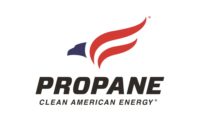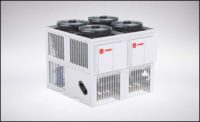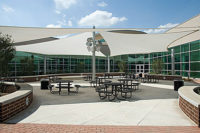As the commercial water heating industry continues to focus on decarbonization, one of the most important considerations for engineers is a building's total energy usage and how different technologies can impact this number. For specifying engineers, this means that ensuring efficient system design is more important than ever. To avoid costly oversizing, it’s essential for engineers to be more precise in piping and sizing decisions — and to make smart selections for backup heat.
In the commercial industry, specifying engineers are looking to new technologies, like heat pump water heaters (HPWHs), to help reach decarbonization goals. In states like California and New York, there are already strong incentives for installing HPWHs, plus, many companies and institutions have implemented corporate sustainability goals that are furthering the adoption of heat pump technology. But in the near term, what’s needed is a pragmatic approach to decarbonization that includes hybrid solutions — pairing a high-efficiency gas or electric boiler with a heat pump to reduce energy costs and put less of a strain on the electric grid.
Since the U.S. Department of Energy proposed new rules that push the industry to phase out all noncondensing gas units by 2026, there has been a ramp-up in new products and technologies that encourage energy-efficient practices. Manufacturers are working hard to ensure that new product launches are properly supported with the necessary resources and education to prepare the industry for these new technologies.
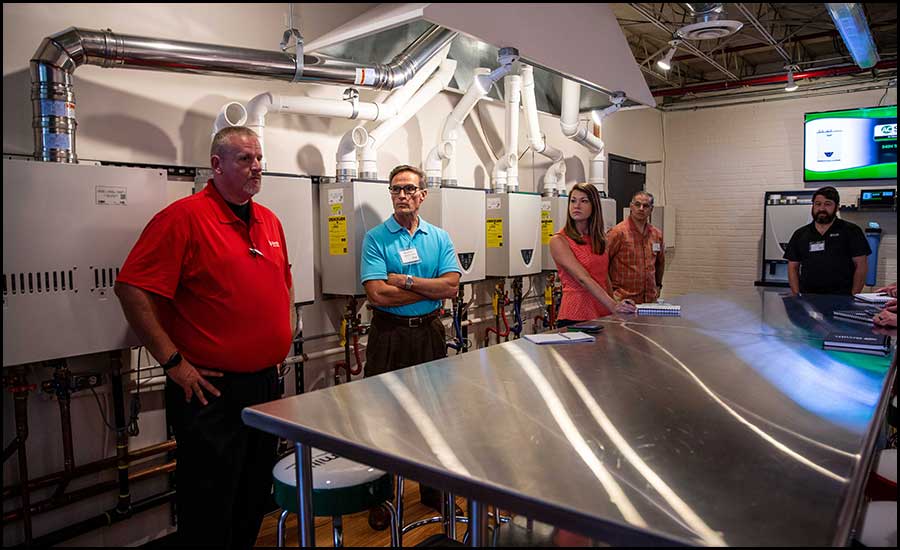
A paradigm shift in application design
With the industry-wide shift toward decarbonization, specifying engineers have started taking advantage of a heat pump water heater’s capability to move energy throughout a commercial building without wasting it. For instance, a heat pump water heater can remove hot air from the kitchen of a fast-food restaurant to provide an emissions-free source for water heating.
Winter temperatures are also an important factor when considering specifying heat pump water heaters. In the Sun Belt, for example, HPWHs deliver excellent efficiency year-round. But in places like Vermont and Michigan, these units can lose capacity and temperature during the coldest parts of the year. Because of this, hybrid systems offer advantages in places that experience harsh winter climate conditions
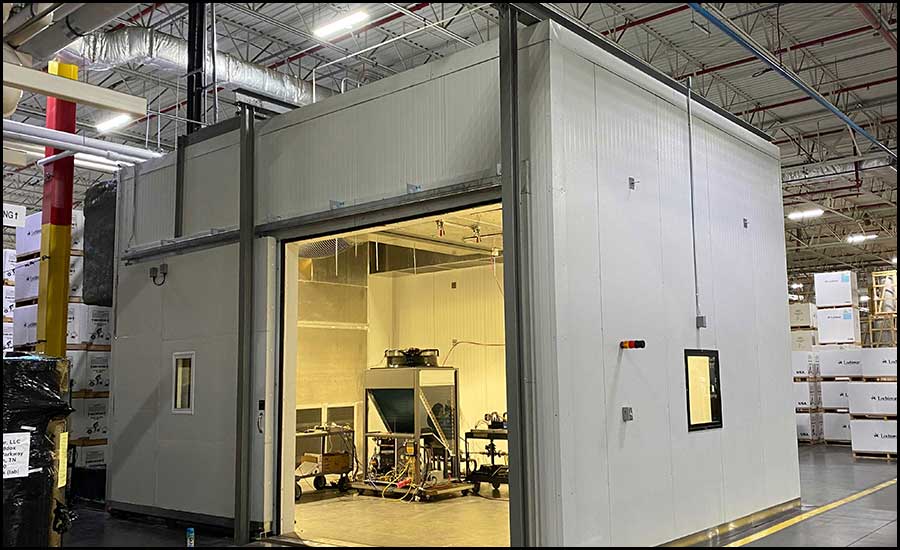
More resources for specifying engineers
With the proliferation of new products, it’s imperative for engineers to have state-of-the-art educational resources at their fingertips and manufacturer-led education can provide engineers with the resources they need. Reaping the benefits of hybrid solutions requires specifying accuracy and webinars and hands-on training events can help engineers make precise determinations. Training programs also offer resources for the installers who work closely with specifying engineers. Having these resources readily available equips engineers and installers with the knowledge they need to lead the industry toward a greener future.

Where is the industry heading?
Thanks to federal, state, and local incentives and rebates for emissions-free or reduced-emissions products, it’s likely that the next two years will see one of the biggest increases in new-to-market product volume in the history of the industry. Not only is there an overall increased demand for HPWHs, but most installations typically require multiple HPWHs to match the capacity of one high-efficiency gas unit. Manufacturers are investing in producing new products at a higher volume to meet this unprecedented demand.
For the rest of this decade, the industry will likely see more commercial circulating systems and hybrid solutions. In the future, there will be more systems that use a circulating heat pump water heater matched with different-sized tanks to accommodate efficient cascading, more accurate system sizing, and installation flexibility. For retrofit projects, we’re starting to see more demand-response systems come online to enable load-shifting that helps take the burden off the grid during periods of peak demand.
The bottom line is that the push for decarbonization is multifaceted. Everyone in the commercial water heating industry will need to focus their efforts on supporting this shift through new technologies and educational resources to ensure a smooth transition.




